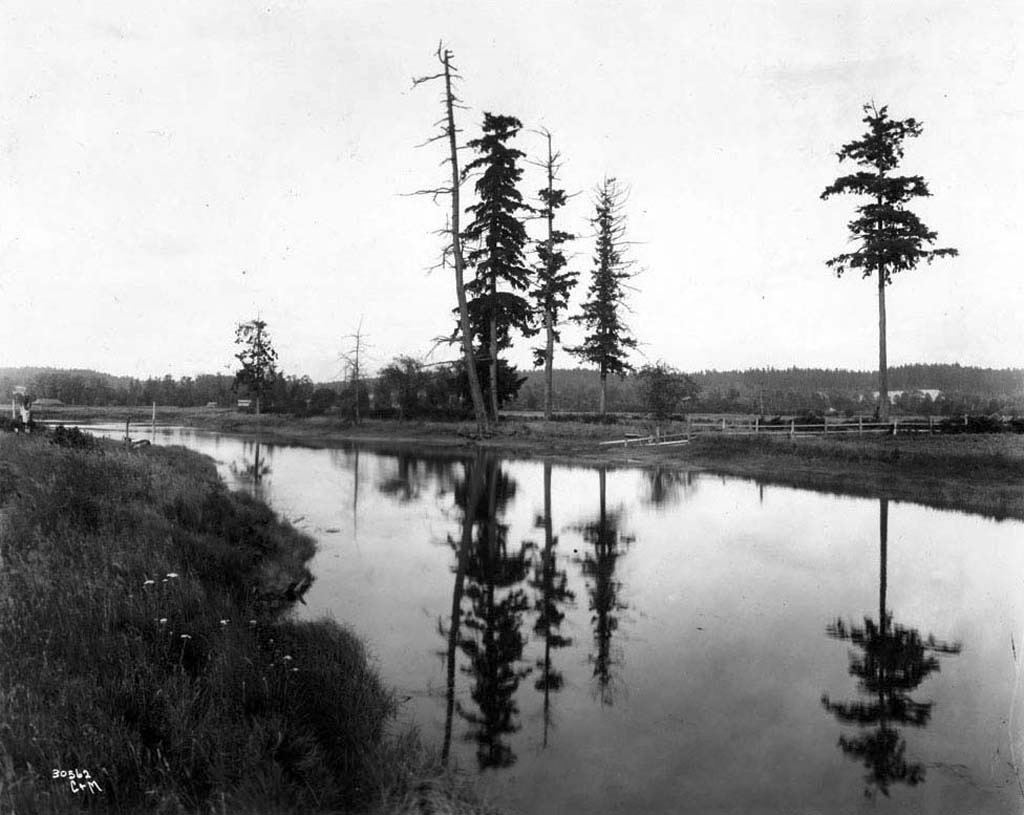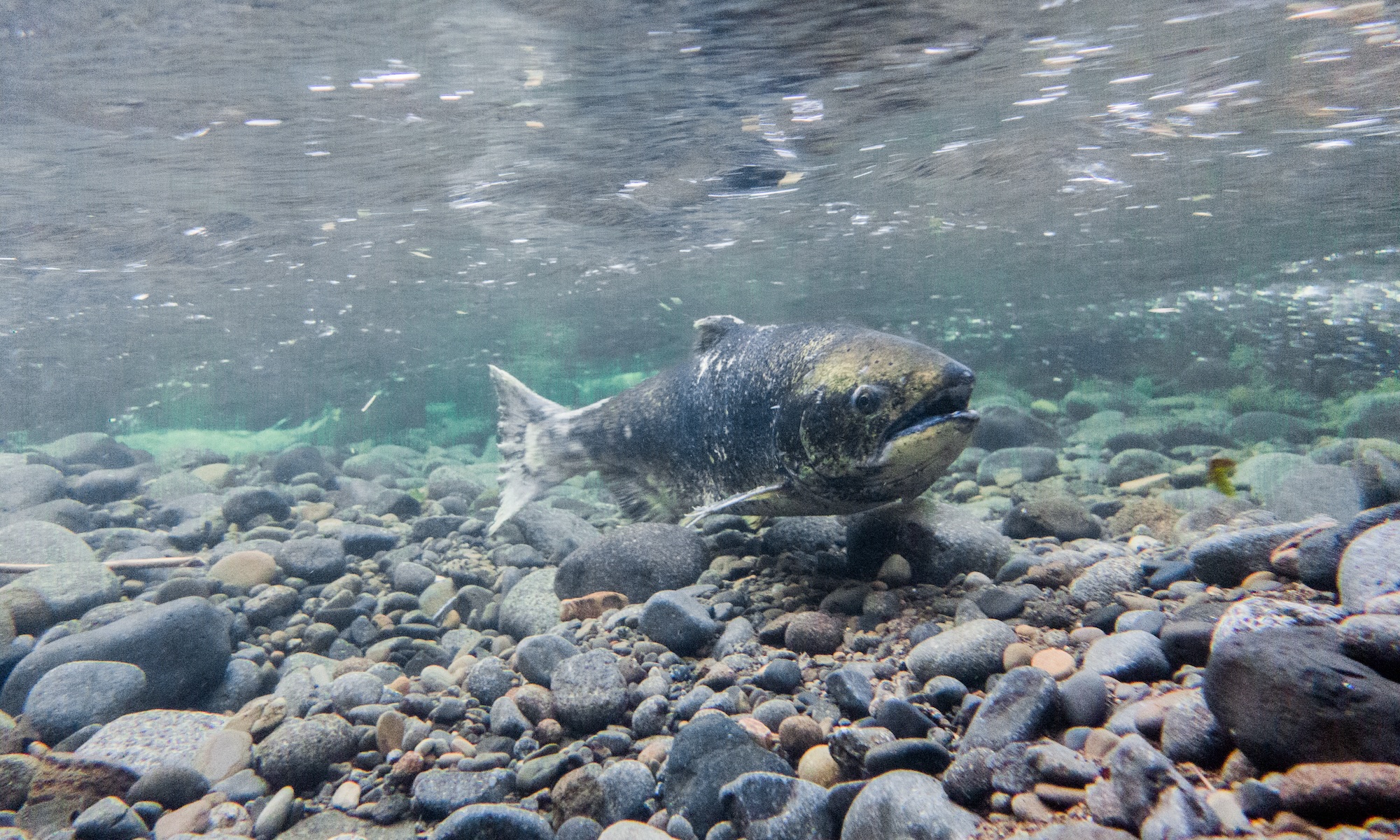It was 50 years ago, on February 12th, that U.S. District Judge George Boldt handed down his landmark ruling, which resolved the meaning of Indian treaties signed during the 1850s. Boldt ruled that the intent and authority of the treaties remained unchanged. Indigenous people never relinquished the right to hunt and fish in traditional areas, such as guaranteed by the treaties, which were used to peacefully move the natives onto reservations, making way for incoming settlers.

U.S. District Judge George Boldt. Photo: Washington State Historical Society
Boldt’s interpretation of three words in the treaty language — “in common with” — came about during a lawsuit challenging Washington state’s policy of restricting tribal fishing via state regulations. The lawsuit, United States v. Washington, brought the federal government into a legal battle on behalf of the tribes, upending natural resource management as practiced for decades.
The meaning of this key paragraph in the treaty is not self-evident:
“Article 3. The right of taking fish, at all usual and accustomed grounds and stations, is further secured to said Indians in common with all citizens of the Territory…”
In his decision, Judge Boldt said he depended on the dictionary when he declared that “in common with” means “sharing equally.” This was a pivotal definition used in concert with a monumental amount of historical research with which the judge examined the original intent of the federal government and especially the understanding by tribal leaders.
From that definition came the 50-50 allocation of salmon that changed the entire fishing structure in Washington state: “Therefore,” Boldt wrote, “non-treaty fishermen shall have the opportunity to take up to 50 percent of the harvestable number of fish that may be taken by all fishermen at usual and accustomed grounds and stations, and treaty-right fishermen shall have the opportunity to take up to the same percentage of harvestable fish, as stated above.”
Disputed meaning
Boldt’s definition of “in common with” has been much disputed. It has been argued by opponents that the expression merely provides tribal members an equal footing to fish alongside everybody else. In practice, state regulations often blocked Native Americans from fishing in their traditional areas.
In property law, “ownership in common” means that property rights are shared by two or more people and each divisible share may be sold or inherited under specified circumstances. The shares need not be equal, but the owners have equal rights to use the property. This definition may or may not have been considered by Boldt in his determination of equal sharing.
“The commons” can also refer to public resources, such as fish, which cannot be reduced to individual ownership until they are caught. The act of fishing has been used time and again in explaining “the tragedy of the commons” — a phrase formulated by ecologist Garret Hardin in 1968. As the theory goes, individuals make decisions based on their own needs, regardless of the effect on the resource and diminishing supply. The eventual outcome is harm to all users. In fishing without limitation, individuals race to catch what they can before the next guy gets the remaining fish. Without some kind of intervention, the numbers of fish may decline to extinction (Harvard Business School).
At the time of the treaties, concerns about the salmon resource were practically nonexistent. Negotiators for the U.S. government rightly believed that tribal leaders would not sign the treaties if forced to give up their traditional fishing, as described by American Indian law expert Charles Wilkinson in his excellent book “Treaty Justice: The Northwest Tribes, the Boldt Decision, and the Recognition of Fishing Rights.” Fishery resources seemed inexhaustible at the time, and settlers seemed little interested in fishing, so the treaty was written without restrictions on tribal fishing. Territorial Governor Isaac Stevens even pushed the continuing opportunity to fish as a big benefit during treaty negotiations.

A 1924 photo labeled “Treaty trees” shows the site of the 1854 Medicine Creek Treaty in what is now Thurston County. The treaty involves the Puyallup, Nisqually, Steilacoom and Squaxin Island tribes. Photo: Washington State Historical Society
“Are you not my children and also children of the Great Father?” Stevens asked of tribal leaders gathered for the Point No Point treaty. “This paper is such as a man would give to his children, and I will tell you why…. This paper gives you a home. Does not a father give his children a home? … This paper secures your fish. Does not a father give food to his children?”
Judge Boldt apparently gave some weight to Stevens’ statement and to similar ones, as he came to realize that fishing was paramount to the tribes. Boldt followed the principle, established by the U.S. Supreme Court, that treaties must be interpreted as understood by the indigenous people, particularly given language limitations in translating complex issues.
As Boldt said in his ruling, “There is no indication that the Indians intended or understood the language ‘in common with all citizens of the Territory’ to limit their right to fish in any way. For many years following the treaties, the Indians continued to fish in their customary manner and places, and although non-Indians also fished, there was no need for any restrictions on fishing.”
New fishing industry
For about 20 years after the treaties were signed, fishing by tribal members, settlers and a few commercial fishermen went on without much dispute. But dramatic changes began in 1877 with the first cannery in Mukilteo, which launched a major industry with national and international markets and increasing demands for salmon. The demands could only be supplied by massive commercial fishing operations from the Pacific Ocean to the inland waters and up into the streams. By the early 1900s, most of the fish were caught before they made it back to the near-reservation areas where the tribal members were fishing. The rapid decline in fish was the beginning of a true tragedy of the commons, according to some ecologists, although others point out that social and economic factors never provided the theoretical “open access” needed to say the resource was held “in common.”
In any case, the fish were greatly diminished before the state government began to impose some rather mild fishing rules beginning in the 1930s, growing stricter through the years as fish populations continued to decline. Realizing that salmon runs depended on spawning fish, state rules often closed fishing in the rivers — where many Native American fishers were operating — rather than shut down commercial operations farther from shore. Through the 1950s and ‘60s, much of the tribal fishing was considered illegal under state rules. But those rules were not recognized by tribal members whose grandparents had passed down the understanding of treaty promises. State enforcement of such fishing rules against tribal members led to arrests, public demonstrations and raids by enforcement officers.
Much has been written about this conflict between state and tribal officials, including “fish-ins” and violent clashes that made the news. Federal officials finally agreed something must be done, and their answer was to sue the state on behalf of the tribes.
Looking back, Boldt’s 50-50 share of fish between the state and the tribes did not seem fair to some non-native people at the time. Angry protests and personal attacks on Native Americans were part of the picture. With native people harvesting only 5 percent of the salmon when Boldt made his ruling, sport and commercial fishermen wanted to know how 50 percent could be a fair apportionment. After all, there were far more non-native people who wanted to fish. And where did this idea of separate allocations even come from?
Before the lawsuit called United States v. Washington, there was United States v. Oregon, filed in 1968. In that case dealing with Columbia River fishing, U.S. District Judge Robert Belloni confronted some of the same issues that Boldt would deal with two years later. Tribal fisheries were being closed by the state of Oregon, supposedly for “conservation” purposes to save the resource. But Belloni found that the state’s fishing regulations served not only to protect the fish but were designed to “perpetuate and enhance the supply” for non-tribal commercial and sport fishers. These fishing rules, showing no consideration for a tribal share, violated treaty rights and amounted to illegal discrimination under federal law, he said.
Belloni determined that tribes must receive a “fair share” of the resource and that state management must prioritize tribal fishing no less than non-treaty sport and commercial fisheries. Conservation is important, he said, but it must not impose a greater burden on the tribes, which should be involved in planning the fishing seasons.
Belloni did not apply a specific percentage to his “fair share” allowance, but a few years later Boldt essentially adopted the concept and determined that 50 percent was the appropriate number based on the treaty language of “in common with.” Soon after Boldt issued his ruling, Belloni amended his order to 50-50, leaving things largely as they stand today.
Road to co-management
I have no idea if Boldt considered 50 percent to be a magic number, perfectly balancing the rights of two sovereign governments. But he did give some thought to co-management, the idea that both the state and tribes must agree to where, when and how fishing would be conducted by persons operating under the separate control of the two parties. Boldt hoped that 50-50 would lead to a form of partnership. Any other number would have distorted this balance, creating uncertain consequences in management.
Boldt maintained jurisdiction over the case, which got off to a rocky start. State salmon managers were slow to accept the decision or to comprehend what they needed to do in the face of such a dramatic reduction in non-treaty harvest. At first, large numbers of non-tribal fishermen rejected Boldt’s decision, and some violated fishing rules approved under the new system. Eventually, many fishermen gave up fishing, aided by a federal buy-back program addressing fishing licenses and boats. On the other hand, tribes and their fishermen were challenged to increase their fishing gear to catch more salmon and exercise their newly recognized rights.
Management disputes were resolved by the federal court with help from technical advisers and later an official Fisheries Advisory Board established by Boldt. In time, the state and tribes learned to work together in ways that would resolve disputes without revisiting the court-established system.
During the transition, the Washington State Supreme Court also came to oppose the decision. State managers were caught between two courts, so Boldt took over management of the fishery for a time. The U.S. Supreme Court, which first declined to hear the appeal, eventually took up the issue, ruling in July of 1979.
In its decision, the U.S. Supreme Court upheld Boldt’s decision in nearly all respects. One revision, however, described the tribe’s 50-percent share as a “maximum, but not a minimum, allocation.” As such, the court said, the central principle is that the treaty secured “as much as, but no more than, is necessary to provide the Indians with a livelihood — that is to say a moderate living.” This “moderate living” provision, which created a potential crack in the symmetrical 50-50 allocation, was envisioned as an outlet if a tribe were ever to dwindle to a few members or abandon its fishing activities altogether. This provision has never been advanced.
Leonard Forsman, chairman of the Suquamish Tribe, said Boldt’s recognition that salmon were essential to native people helped to re-ignite traditional practices in the modern world.
“Much more than dollars and cents was the cultural importance of salmon to the people,” Forsman told me. “That recognition was crucial in establishing the tribes’ rights that had been reserved.”
The Boldt decision became part of a resurgence in tribal culture and authority that followed periods of oppression, when federal policies pushed for the elimination of reservations and the assimilation of native people into the broader population.
“The assimilation mantra was still there,” Forsman said of the time period following the Boldt decision, when tribes were fighting for sovereignty and self-governance.
According to Forsman, the Boldt ruling reinforced President Richard Nixon’s “special message to Congress,” which he delivered two months before U.S. attorneys filed the lawsuit that would lead to the Boldt decision.
“The first Americans — the Indians — are the most deprived and most isolated minority group in our nation,” Nixon said. “On virtually every scale of measurement — employment, income, education, health — the condition of the Indian people ranks at the bottom…. But the story of the Indian in America is something more than the record of the white man’s frequent aggression, broken agreements, intermittent remorse and prolonged failure. It is a record of endurance, of survival, of adaptation and creativity in the face of overwhelming obstacles…. It is long past time that the Indian policies of the federal government began to recognize and build upon the capacities and insights of the Indian people.”
Nixon called for abolishing the federal policy of tribal termination as well as the “suffocating pattern of paternalism” in favor of a policy of self-determination that would encourage tribes to take control of health and education programs and independently establish their own economic infrastructure. Those ideas were codified with the Indian Self-Determination and Education Assistance Act of 1975.
Joseph Pavel, natural resources director and member of the Skokomish Tribe, stressed that the tribes gained a stronger voice thanks to such laws and leadership at all levels. For fishing, tribal leaders gained ground by speaking out for treaty rights and working hard to make sure that tribal staffs could at least match the scientific, administrative and management expertise of state and federal governments.
“The Boldt decision was one part,” he said, “but it really took tribal leaders looking out for the best interests of their people.”
Protecting natural systems
Turmoil over who would harvest the fish eventually turned to coordinated planning and an annual step-by-step approach to allocation between treaty and non-treaty shares, all guided by scientific discussions. Each salmon run is predicted based on surveys and environmental conditions. With agreed numbers, computer models help to measure the effects of various types of fishing throughout the region. It would be a complex process even without the 50-50 allocation.
With the equal split established as a goal, the allocation among tribes becomes a challenge to be resolved among tribal officials alone — although they do have considerable help from experts at their mutual organization, the Northwest Indian Fisheries Commission. Disputes over where different tribes are allowed to fish — a major issue in tribal sharing — still need to be resolved on occasion in federal court.
For the state’s 50 percent, fishing seasons must be established to determine where each species of salmon will be caught by diverse sport and commercial interests. Allocations among sport and commercial fishing lead to ongoing battles before the Washington Fish and Wildlife Commission. Other struggles over fish involve the owners of large and small commercial vessels.
Beyond fishing, treaty language established other Native American rights, such as hunting and shellfish gathering. In 1994, U.S. District Judge Edward Rafeedie declared that Boldt’s 50-50 allocation applies to shellfish except where shellfish beds had been “staked and cultivated,” as prescribed by the treaty. Today, many waterfront property owners — including state and federal governments — share the shellfish resource equally with the tribes.
Boldt also recognized that any rights to fish for salmon would be extinguished if salmon were to disappear, so he made it clear that the treaties provide for an inherent right to maintain salmon habitat. The idea also extends to the protection of other fish, shellfish and natural resources protected by the treaties. Consequently, tribes have been widely recognized as a powerful voice in natural resource management, and the state and federal governments have established pacts that recognize these various rights. Such include issues of forest management, urban development, streamflows, water rights and pollution, along with salmon migration and other habitat issues.
Some of the largest environmental groups in the country recognize the important role of tribes in protecting natural systems that have persisted for thousands of years.
“The fight for a healthier planet is inextricably bound up with indigenous rights,” writes attorney Giulia C.S. Good Stefani of the Natural Resources Defense Council in a blog post. “Across sectors and ecosystems, indigenous leadership is charting the way toward a just and sustainable future.”

